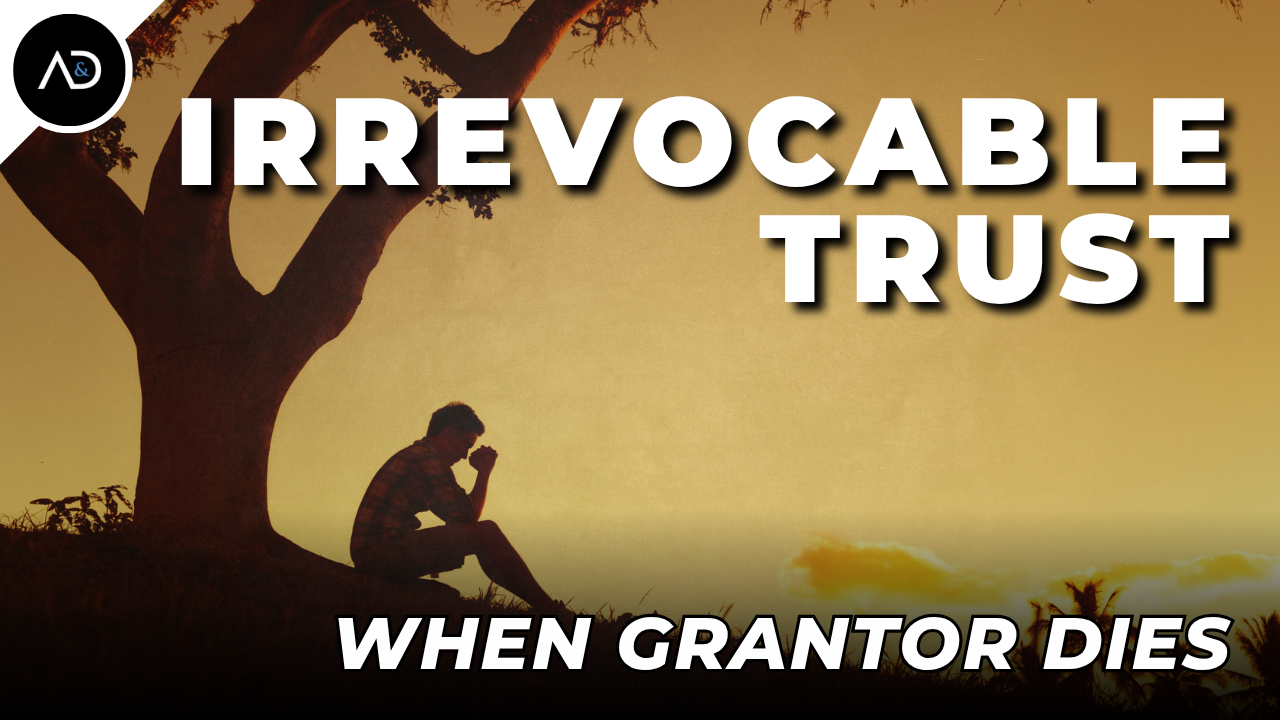
The answer depends entirely on the terms outlined in the trust document. In most cases, when the grantor (also known as the settlor) of an irrevocable trust passes away, the trust either terminates and distributes the assets or continues to hold them in trust for the beneficiaries. The trust document will clearly state what should happen next.
Looking for more insight? We’ve also put together a short video that walks through what happens to an irrevocable trust when the grantor dies. It can help make the key points easier to understand as you read.
Outright Distribution
Many irrevocable trusts provide for outright distribution of the assets upon the grantor’s death. This means the assets are passed directly to the named beneficiaries. These distributions can be straightforward if the trust includes clear language like:
“Equally to my issue then living and issue then deceased leaving issue living.”
Though this may sound complex, it typically means the assets will go to the grantor’s children and grandchildren, divided among those living and the descendants of those who have passed.

If the trust states the assets are to be distributed “outright and free of trust,” then the trustee’s role is to pay any final debts and expenses of the deceased grantor and distribute the assets within a reasonable timeframe. After this, the trust terminates and ceases to exist.
Holding Assets in Trust
Some trusts continue beyond the grantor’s death by holding assets in trust for beneficiaries rather than distributing them outright. This often happens for:
- Minor beneficiaries
- Beneficiaries with special needs
- Beneficiaries who may need financial oversight or protection
- Settlors who think beneficiaries can’t handle money, even when they can (you know how parents can be)
- Beneficiaries who need or want creditor protection
- Beneficiaries who need or want protection for a future divorce
In such cases, the trust will still name specific beneficiaries and describe how and when they receive benefits. Importantly, not all beneficiaries are treated the same—some may receive assets outright while others have their shares held in trust.
Terms of the Continuing Trust
When a trust holds assets for a beneficiary, it will usually include the following instructions:
- Income Distribution: The trust will state whether the income (interest, dividends, etc.) must be distributed regularly (e.g., monthly or quarterly), or if it may be distributed at the trustee’s discretion for purposes such as the beneficiary’s health, education, maintenance, or support (often referred to as “HEMS” standards).
- Principal Distribution: The trust may allow—or restrict—access to the principal (the original assets). Again, this can be mandatory, discretionary, or completely restricted depending on the trust’s language.
- Duration of the Trust: Some trusts provide for full distribution at a certain age (e.g., 25 or 30). Others may stagger distributions over time—for example, one-third at age 25, one-third at 30, and the remainder at 35. In some cases, the trust may last for the entire lifetime of the beneficiary, with the remaining assets passing to the beneficiary’s children (or other issue) upon death.
How Long Can a Trust Last?
In California and most other states, trusts cannot last indefinitely. This limitation is governed by the Rule Against Perpetuities or similar statutes. Generally, a trust must end within a certain time frame—typically measured as “21 years after the death of a living person named in the trust.”
That said, a trust can often last for one or even two generations—for example, for the lifetime of the grantor’s child, and then continue for the lifetime of a grandchild. But by the time the trust reaches a great, grandchild, it most likely must be terminated by operation of law.
Final Thoughts
If you’re the trustee, a beneficiary, or a family member with questions about what happens to an irrevocable trust after the grantor’s death, it’s important to consult with a knowledgeable trust attorney. Trusts can be complex, and the language of the document controls every outcome.

